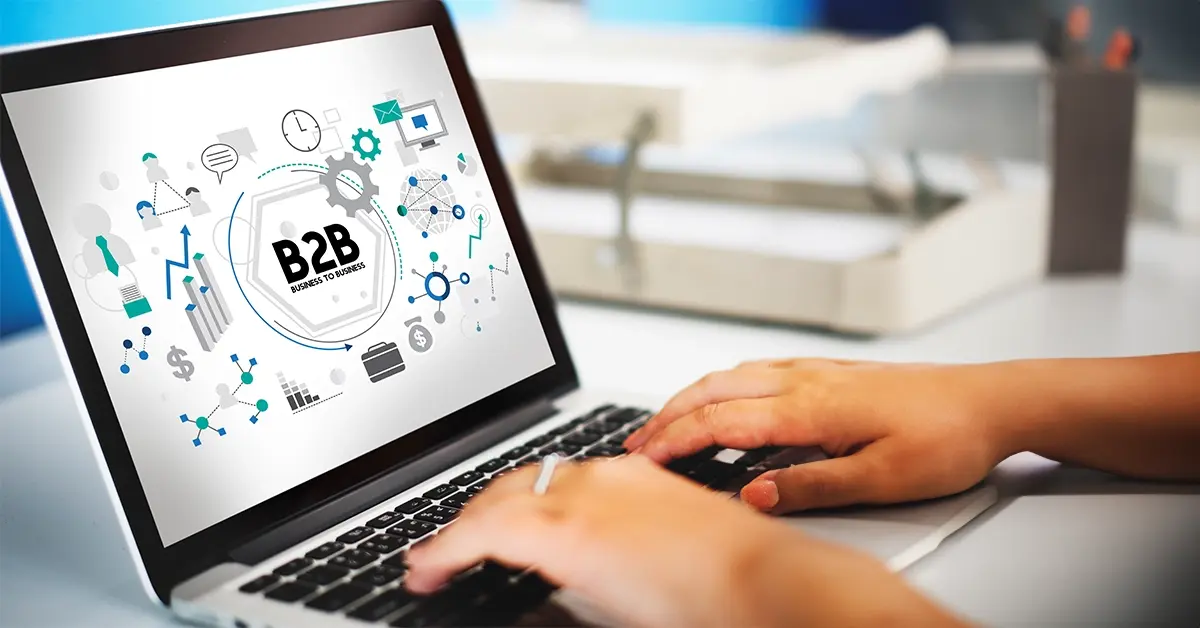7 Best Practices to Enhance B2B Customer Experience

Did you know that 72% of customers will share a positive experience with 6 or more people?
A satisfied and happy customer becomes a loyal advocate and helps attract new customers through word-of-mouth marketing.
Therefore, companies must prioritize customer experience and constantly innovate to improve it.
In this blog, we discuss best practices your businesses can use to improve B2B customer experiences and ultimately achieve higher customer satisfaction and loyalty.
What is B2B Customer Experience?
B2B customer experience, or business-to-business customer experience, refers to the interactions and relationships between businesses (rather than between businesses and individual consumers) throughout the entire lifecycle of their partnership. It encompasses every touchpoint and interaction between the two entities, from initial contact and sales to ongoing support and service.
This covers all facets of the customer’s interaction with your business, including the product or service itself, simplicity of doing your business, high-quality customer service, and continued support.
B2B customer experience is different from B2C CX in a few key ways.
Compared to B2C transactions, your B2B transactions are typically more layered, requiring several decision-makers and lengthier sales cycles.
Additionally, B2B customers often have more specific needs than B2C customers, which require more tailored solutions and customized support.
Ultimately, to accomplish their company objectives, make wise judgments, and thrive in their market, B2B customers typically demand greater degrees of customization, knowledge, and assistance.
7 Best Practices to Enhance B2B Customer Experience
1. Know your Customers
Understanding your B2B customers is essential for improving their experience. This comprises learning about your customers, their pain points, goals, and preferences.
To develop your business customer profiles, conduct extensive research, speak with key players, and analyze data.
You can adjust your products, services, and communications to meet their requirements by thoroughly understanding your customers’ demands and challenges.
2. Foster a Customer-Centric Work Environment
Developing a customer-centric culture is critical to constantly providing outstanding B2B customer experiences. Encourage a mentality shift throughout your business, highlighting the significance of prioritizing customers in decision-making.
Empower staff at all levels to prioritize customer requirements, handle problems proactively, and surpass expectations.
Create a work atmosphere that values collaboration, empathy, and continuous development, emphasizing your organization’s commitment to providing value and developing long-term connections with B2B customers.
3. Offer Personalized Experiences
For an engaging B2B customer experience, personalization is essential. Data analytics, segmentation methods, and customer insights can be used to provide personalized experiences at all touchpoints.
From individualized marketing communications and product recommendations to tailored pricing and service offerings, make every connection feel relevant and vital to each unique customer.
Demonstrating that you understand and cater to their individual requirements builds stronger bonds and improves loyalty and satisfaction.
4. Provide Self-Service Opportunities
Empowering B2B customers with self-service options enhances convenience, efficiency, and autonomy in their interactions with your business.
Invest in intuitive online portals, knowledge bases, and resources that enable customers to find information, place orders, track shipments, and resolve issues independently.
By allowing customers to access support and information on their terms, you reduce their reliance on traditional support channels and improve overall satisfaction.
5. Use Customer Service Technologies
Embracing technology can transform how you provide customer service and support to your B2B customers.
Implement customer relationship management (CRM) systems, helpdesk software, chatbots, and other digital tools to improve communication, automate repetitive processes, and increase responsiveness.
Use AI and machine learning algorithms to analyze customer data, predict needs, and personalize real-time interactions. By leveraging technology, you improve efficiency, grow support operations, and provide consistent, high-quality experiences across all channels.
6. Collect Customer Feedback
Collecting feedback is a cornerstone of gaining important insights into your customer satisfaction levels, problem points, and areas for improvement.
Use surveys, feedback forms, and NPS (Net Promoter Score) assessments to collect customer information at critical stages throughout their journey.
Actively listen to their feedback, prioritize their problems, and be open about your response steps.
By displaying a willingness to listen to and act on customer feedback, you establish trust and loyalty and drive continual improvement in the B2B customer experience.
7. Provide Proactive Customer Service
Anticipating and addressing customer needs before they arise is an example of proactive customer service.
Use data analytics and predictive analytics to spot trends, forecast prospective problems, and proactively reach out to customers with appropriate solutions or help.
Provide proactive advice, training, and resources to help customers maximize the value of your products or services and achieve your business goals.
Taking a proactive approach to customer service strengthens connections, reduces churn, and positions your company as a reliable partner in your customers’ success.
Key Takeaways
Your businesses implementing the seven best practices outlined in this blog can create a customer-centric work environment, provide personalized experiences, improve self-service opportunities, use technology to improve customer support, collect feedback, and provide proactive customer service.
These tactics can enhance customer relationships and provide a fantastic B2B customer experience, which is critical for long-term success.
Related Post
Copyright © gocustomerexperience.com. All Rights Reserved.




